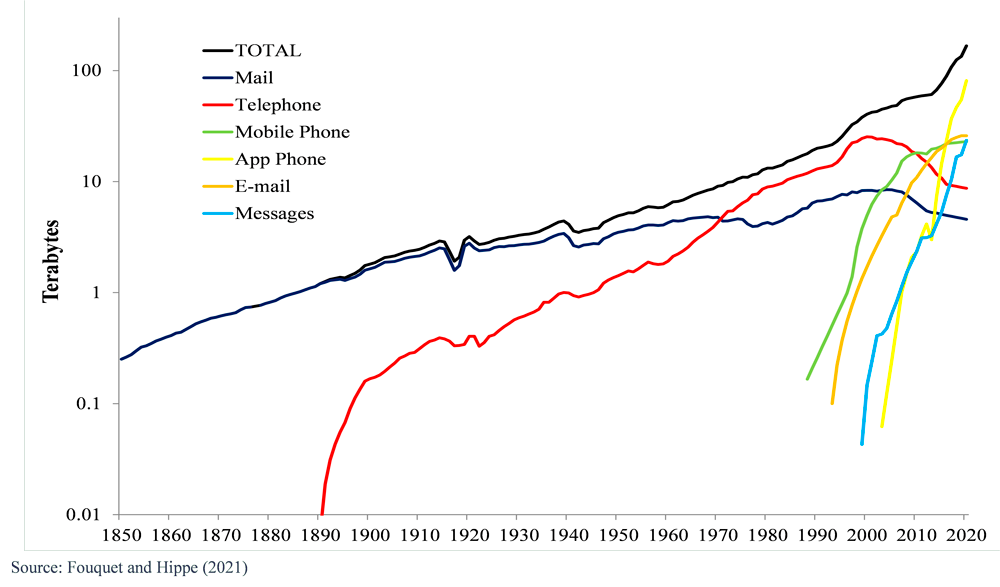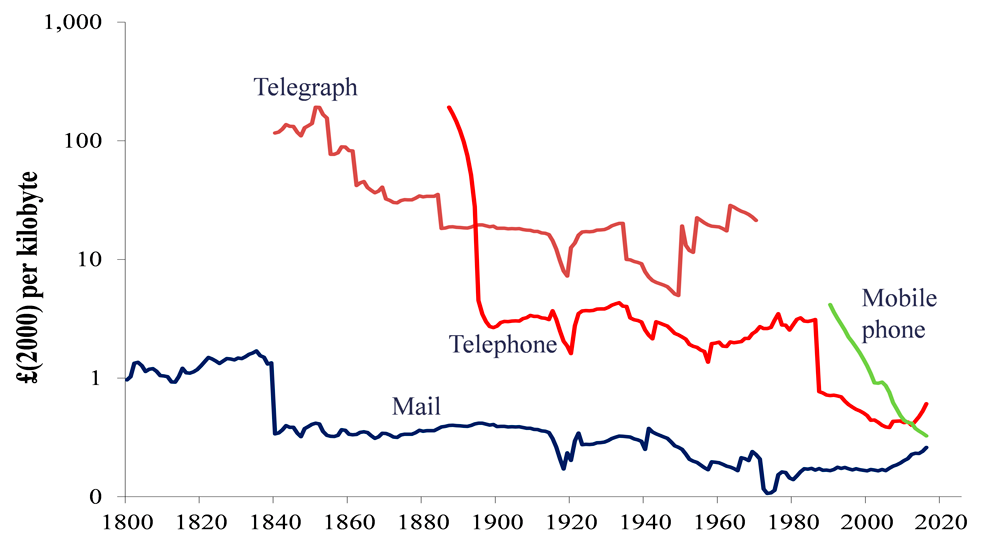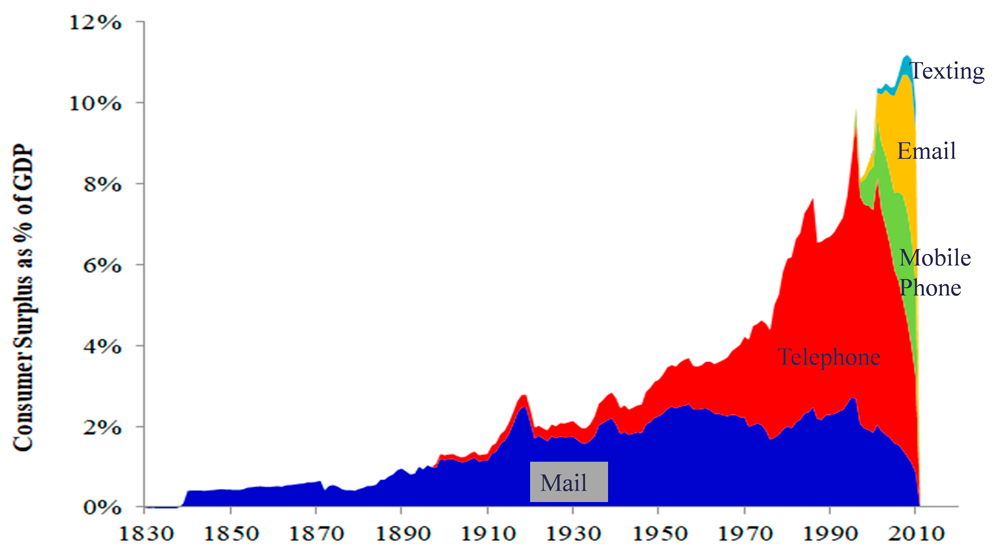The digitalisation of society has accelerated during the coronavirus pandemic, but this trend has been underway for decades. Roger Fouquet explores the increase in communication consumption.
Social distancing rules associated with Covid-19 have led many in the UK and across the world to work and meet remotely, as well as shop online. In other words, there was an acceleration of the digitalisation of society that has already been underway for several decades.
The purpose of the CREDS Digital Society project led by Dr Roger Fouquet at the London School of Economics and Political Science (LSE)’s Grantham Research Institute on Climate Change and the Environment is to place the digitalisation of society within a longer run perspective of information and communication technology (ICT) demand and its impact on energy consumption, with a view to anticipating future trends.
The project collected data on the price and consumption of communication for the UK. Figure 1 shows the dramatic increase in communication in the UK over the last 150 years, as new technologies appeared on the market and diffused across the population. One of the key factors driving this rise in consumption was the reductions in the cost of sending a letter or making a telephone call (see Figure 2). Indeed, today, email and app mobile phone calls are effectively free for many people.
The benefits to users from new communication technologies
Despite the upward long-run trend in communication since the mid-nineteenth century, Figure 1 shows the acceleration in communication use from the beginning of the twenty-first century. The first task of the project was to use the data to estimate how communication consumption changed with variations in income and communication prices. One of the main results is that as people became richer and communicated more, they were less responsive to changes in income and prices – a similar observation was found in relation to energy services, such as heating, transport and lighting (Fouquet 2018).
This information on consumer responsiveness then enabled the estimation of the net benefits (i.e., consumer surplus) of different communication technologies, using a method developed in Fouquet (2018). This method uses historical information about how much people in the past were willing to pay for communication (e.g., to send one letter or make one phone call) and, taking account of changes in income, extrapolates this forward towards the present to construct a full demand curve for communication. The net benefits (i.e., consumer surplus) are calculated as the difference between the benefits (measured by the willingness-to-pay) and the costs (measured by the price).
Figure 3 reveals the increases in net benefits to consumers from new and diffusing communication technologies. This started with the reduction in the price of postal services due to the railways in the 1840s (seen in Figure 2). Then, with the democratisation of telephones in second-half of the twentieth century and the liberalisation of telecommunication services leading to lower prices in the 1980s, benefits increased again. Figure 3 also highlights that some of the benefits are simple substitutions of fixed telephones for mobile phones and letters for emails. Nevertheless, the digitalisation of communication has helped increase consumer surplus even more, especially because they are so cheap to use.
Taking account of the environment
An important angle for future research is to understand how this digitalisation of communication and information and its acceleration due to Covid-19 will impact society and the environment. Indeed, on the one hand, teleworking, virtual meetings and online shopping have reduced energy use and emissions (Hook et al. 2020). On the other hand, digitalisation, especially associated with data centres, is responsible for increasing energy use (Koomey et al. 2013). Thus, a crucial question to be explored further will be to compare the benefits to the consumer with the costs to the environment, and understand when consumers benefit more than the cost to the environment, and when policies should discourage ICT use because the costs dominate.



References
Fouquet, R. (2018). Consumer surplus from energy transitions. The Energy Journal, 39(3): 167-88.
Fouquet, R. and Hippe, R. (2019). The transition from a fossil-fuel economy to a knowledge economy. In Fouquet, R. (ed.) Handbook on Green Growth. Edward Elgar Publications. Cheltenham, UK, and Northampton, MA, USA.
Fouquet, R. and Hippe, R. (2021). The twin transition: energy and communication in the structural transformation of European economies.
Hook, A., Court, V., Sovacool, B.K. and Sorrell, S. (2020). Systematic review of the energy and climate impacts of teleworking. IFP School-IFPEN Working Paper. No 133.
Koomey, J.G., Matthews, H.S. and Williams, E. (2013). Smart Everything: Will Intelligent Systems Reduce Resource Use? Annual Review of Environment and Resources, 38: 311–43.
Banner photo credit: Fancycrave on Unsplash



